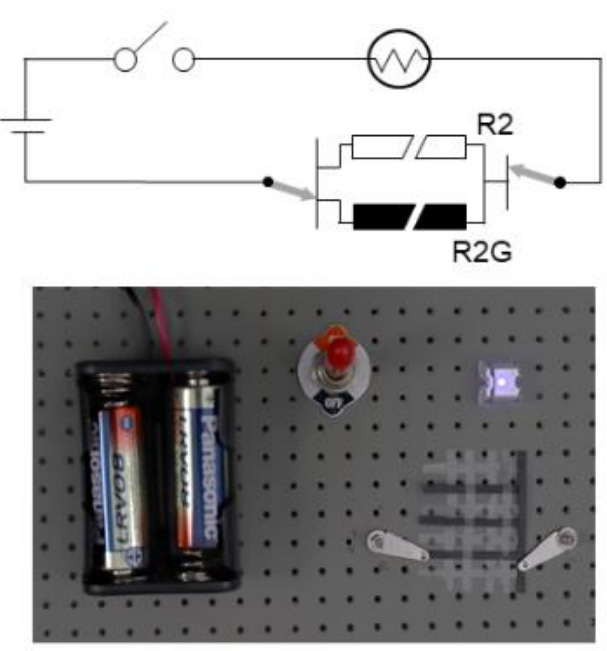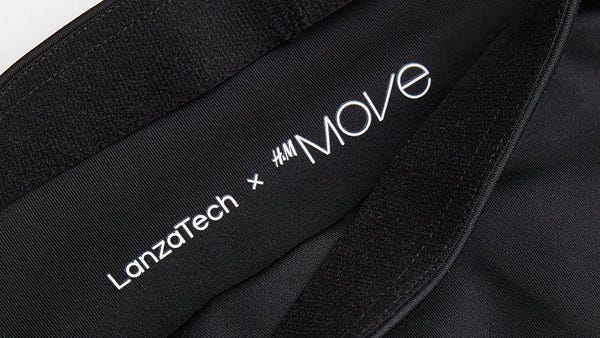This is Codon Digest, my weekly roundup of research, news, and industry highlights about the future of biology.
Also: I’ve turned on paid subscriptions. No plans for exclusive content just yet, but if you’d like to support my work for $3 or $5 per month, please consider it. My goal is to reach 100 supporters! Thank you for being here.
“Computer science is to biology what calculus is to physics.”
🔥 Ten Amazing Things
(that happened this week…)
A CAR-T therapy was tested in 27 children with neuroblastomas. The CAR-T cells were detectable in 26 out of 27 children after 30 months. Of those, 17 children responded to the treatment, and the 3-year overall survival rate was 60 percent. LanzaTech announced a partnership with H&M Move to convert factory carbon emissions into fabrics using engineered microbes. Stem cells from macaques were converted into synthetic embryos, and then those embryos were implanted back into eight different female macaques. The “embryo-like” structures stopped developing after about a week, and no fetuses were formed. Silk proteins from Nephila pilipes, the golden orb-web spider, were produced by living bacteria, purified, and then mixed with graphene. The resulting biomaterial was self-healing, conducts electricity, and can even be used to build electric logic circuits.

Sequenced genomes from 23 woolly mammoths and 28 living elephants reveal a smattering of genes necessary for adaptation to cold environments. The new sequences might help de-extinction efforts. Small snippets of double-stranded RNA were sprayed onto hot pepper plants to control a pest, called Frankliniella occidentalis. The RNA strands shut down a specific gene in the insects, and killed half after 7 days. RNA may offer a safer form of pest control in the future. Marine sponges were cultured in the laboratory continuously for the first time. Sponge cells double in population quite quickly — around 40 minutes — and could be engineered to manufacture drugs. A miniature microscope, with the same thickness as a sheet of paper, was inserted deep into the brain of mice and then used to image “the whole depth of the animal brain,” including individual connections between neurons. It even recorded blood movement through the tissue. Designer proteins were created that can bind to arbitrary peptides “with nanomolar to picomolar affinities.” This technology could be used to design protein therapeutics that can bind to, and “shut down,” harmful or misfolded proteins in living cells. Thousands of transcription factors — proteins that bind DNA and control gene expression — were studied in human cells. Stanford scientists uncovered 374 protein activation domains and 715 repression domains, 80 percent of which were previously unannotated. In the future, perhaps these protein domains could be used to construct new proteins that control the genome like a marionette.
📜 Papers
(* = Recommended.)
AI + Bio
*Transfer learning for cross-context prediction of protein expression from 5’UTR sequence. Gilliot P-A & Gorochowski T.E. bioRxiv. Read
NeuronMotif: Deciphering cis-regulatory codes by layer-wise demixing of deep neural networks. Wei Z. PNAS. Read
Regression Transformer enables concurrent sequence regression and generation for molecular language modelling. Born J & Manica M. Nature Machine Intelligence. Read
Basic Science
*mRNA decoding in human is kinetically and structurally distinct from bacteria. Holm M. Nature. Read
*Large-scale mapping and mutagenesis of human transcriptional effector domains. DelRosso N. Nature. Read
Discovery of phage determinants that confer sensitivity to bacterial immune systems. Stokar-Avihail A. Cell. Read
First continuous marine sponge cell line established. Hesp K. Scientific Reports. Read
Host-specific plasmid evolution explains the variable spread of clinical antibiotic-resistance plasmids. Benz F & Hall A.R. PNAS. Read
Germline-encoded amino acid–binding motifs drive immunodominant public antibody responses. Shrock E.L. Science. Read
Biological Engineering
*Self-healable spider dragline silk materials. Chen W-C. bioRxiv. Read
*De novo design of modular peptide-binding proteins by superhelical matching. Wu K. Nature. Read
*Functional synthetic biology. Aldulijan I. Synthetic Biology. Read
Computational design of N-linked glycans for high throughput epitope profiling. Greisen Jr. P. bioRxiv. Read
Directed evolution of piperazic acid incorporation by a nonribosomal peptide synthetase. Stephan P. bioRxiv. Read
Cell-free expressed membraneless organelles sequester RNA in synthetic cells. Robinson A.O. bioRxiv. Read
Design of cell-type-specific hyperstable IL-4 mimetics via modular de novo scaffolds. Yang H. Nature Chemical Biology. Read
RNAi-mediated rheostat for dynamic control of AAV-delivered transgenes. Subramanian M. Nature Communications. Read
A roadmap to establish a comprehensive platform for sustainable manufacturing of natural products in yeast. Naseri G. Nature Communications. Read
Construction of a synthetic metabolic pathway for biosynthesis of 2,4-dihydroxybutyric acid from ethylene glycol. Frazão C.J.R. Nature Communications. Read
Clonal amplification-enhanced gene expression in synthetic vesicles. Abil Z. ACS Synthetic Biology. Read
Synthetic microbial sensing and biosynthesis of amaryllidaceae alkaloids. d’Oelsnitz S. bioRxiv. Read
The Brain
*Ultrafast light targeting for high-throughput precise control of neuronal networks. Faini G. Nature Communications. Read
110 μm thin endo-microscope for deep-brain in vivo observations of neuronal connectivity, activity and blood flow dynamics. Stibůrek M. Nature Communications. Read
Sensitivity optimization of a rhodopsin-based fluorescent voltage indicator. Abdelfattah A.S. Neuron. Read
All-optical closed-loop voltage clamp for precise control of muscles and neurons in live animals. Bergs A.C.F. Nature Communications. Read
Neural engineering with photons as synaptic transmitters. Porta-de-la-Riva M. Nature Methods. Read
DNA Sequencing & Synthesis
*Quantitative analysis of tRNA abundance and modifications by nanopore RNA sequencing. Lucas M.C. Nature Biotechnology. Read
Probe-based bacterial single-cell RNA sequencing predicts toxin regulation. McNulty R. Nature Microbiology. Read
Genomics of adaptive evolution in the woolly mammoth. Díez-del-Molino D. Current Biology. Read
Systematic comparison of tools used for m6A mapping from nanopore direct RNA sequencing. Zhong Z-D. Nature Communications. Read
Accurate profiling of full-length Fv in highly homologous antibody libraries using UMI tagged short reads. Levin I. Nucleic Acids Research. Read
Genetic Engineering
Improving the sensitivity of in vivo CRISPR off-target detection with DISCOVER-Seq+. Zou R.S. Nature Methods. Read
TnpB structure reveals minimal functional core of Cas12 nuclease family. Sasnauskas G. Nature. Read
CRISPR/Cas12a-mediated genome editing in Thioalkalivibrio versutus. Hao X. ACS Synthetic Biology. Read
PhiReX 2.0: A programmable and red light-regulated CRISPR-dCas9 system for the activation of endogenous genes in Saccharomyces cerevisiae. Machens F. ACS Synthetic Biology. Read
Health
*GD2-CART01 for relapsed or refractory high-risk neuroblastoma. Del Bufalo F. The New England Journal of Medicine. Read
*T(STEM)-like CAR-T cells exhibit improved persistence and tumor control compared with conventional CAR-T cells in preclinical models. Meyran D. Science Translational Medicine. Read
Safe delivery of AAV vectors to the liver of small weaned pigs by ultrasound-guided percutaneous transhepatic portal vein injection. Rothgangl T. bioRxiv. Read
Engineering a material-genetic interface as safety switch for embedded therapeutic cells. Jerez-Longres C. bioRxiv. Read
Efficacy and safety of a bivalent RSV prefusion F vaccine in older adults. Walsh E.E. The New England Journal of Medicine. Read
Rational design of a highly immunogenic prefusion-stabilized F glycoprotein antigen for a respiratory syncytial virus vaccine. Che Y. Science Translational Medicine. Read
Ocular stress enhances contralateral transfer of lenadogene nolparvovec gene therapy through astrocyte networks. McGrady N.R. Molecular Therapy. Read
Neoadjuvant enoblituzumab in localized prostate cancer: a single-arm, phase 2 trial. Shenderov E. Nature Medicine. Read
Hematopoietic stem-cell gene therapy is associated with restored white matter microvascular function in cerebral adrenoleukodystrophy. Lauer A. Nature Communications. Read
Safe drugs with high potential to block malaria transmission revealed by a spleen-mimetic screening. Carucci M. Nature Communications. Read
Combinatorial gene therapy for epilepsy: Gene sequence positioning and AAV serotype influence expression and inhibitory effect on seizures. Melin E. Gene Therapy. Read
An engineered HIV-1 Gag-based VLP displaying high antigen density induces strong antibody-dependent functional immune responses. Tarrés-Freixas F. npj Vaccines. Read
Longevity
Heterogeneous aging across multiple organ systems and prediction of chronic disease and mortality. Tian Y.E. Nature Medicine. Read
Cold temperature extends longevity and prevents disease-related protein aggregation through PA28γ-induced proteasomes. Lee H.J. Nature Aging. Read
Plants & Algae
*An efficient CRISPR–Cas12a promoter editing system for crop improvement. Zhou J. Nature Plants. Read
Greenhouse test of spraying dsRNA to control the western flower thrips, Frankliniella occidentalis, infesting hot peppers. Khan F. BMC Biotechnology. Read
Optimization of gene editing in cowpea through protoplast transformation and agroinfiltration by targeting the phytoene desaturase gene. Bridgeland A. PLOS One. Read
Algal cell bionics as a step towards photosynthesis-independent hydrogen production. Xu Z. Nature Communications. Read
An integrase toolbox to record gene-expression during plant development. Guiziou S. Nature Communications. Read
Synthetic biology for plant genetic engineering and molecular farming. Wang Y & Demirer G.S. Trends in Biotechnology. Read
Software & Computational Models
*Metaboverse enables automated discovery and visualization of diverse metabolic regulatory patterns. Berg J.A. Nature Cell Biology. Read
Julia for biologists. Roesch E. Nature Methods. Read
Identification of 113 new histone marks by CHiMA, a tailored database search strategy. Gao J. Science Advances. Read
The CellPhe toolkit for cell phenotyping using time-lapse imaging and pattern recognition. Wiggins L. Nature Communications. Read
PEACOCK: a machine learning approach to assess the validity of cell type-specific enhancer-gene regulatory relationships. Mills C. npj Systems Biology and Applications. Read
A relay velocity model infers cell-dependent RNA velocity. Li S. Nature Biotechnology. Read
Cellcano: supervised cell type identification for single cell ATAC-seq data. Ma W. Nature Communications. Read
SpaDecon: cell-type deconvolution in spatial transcriptomics with semi-supervised learning. Coleman K. Communications Biology. Read
Tools and Methods
High-throughput colocalization pipeline quantifies efficacy of mitochondrial targeting signals across different protein types. Lear S.K. bioRxiv. Read
Defining the fine structure of promoter activity on a genome-wide scale with CISSECTOR. FitzPatrick V.D. Nucleic Acids Research. Read
Truncated CD19 as a selection marker for the isolation of stem cell derived β-cells. Huang L.T. bioRxiv. Read
High-throughput spatiotemporal monitoring of single-cell secretions via plasmonic microwell arrays. Ansaryan S. Nature Biomedical Engineering. Read
New Aequorea fluorescent proteins for cell-free bioengineering. Deich C. ACS Synthetic Biology. Read
Single-molecule fingerprinting of protein-drug interaction using a funneled biological nanopore. Jeong K-B. Nature Communications. Read
Efficient reconstruction of cell lineage trees for cell ancestry and cancer. Jang Y. Nucleic Acids Research. Read
exFINDER: identify external communication signals using single-cell transcriptomics data. He C. Nucleic Acids Research. Read
Esearch3D: propagating gene expression in chromatin networks to illuminate active enhancers. Heer M. Nucleic Acids Research. Read
📰 News
Anthropic is trying to raise $5 billion in the next two years to compete with OpenAI (In this economy!?). Tech Crunch. Read
Related: “Washington vows to tackle AI.” (Where have I heard this before?) The Washington Post. Read
A Chinese group made synthetic embryos using stem cells harvested from monkeys, and then implanted them into female monkeys. The synthetic embryos (which scientists caution should be called “embryo-like structures”) implanted in 3 out of 8 monkeys, but none of them formed an actual fetus. WIRED. Read
Related: Great context on the rules governing human embryo research, and ethical questions surrounding this recent work in monkeys. MIT Technology Review. Read
Modern Synthesis created a biomaterial from microbes. The microbes are fed sugar and produce nanocellulose. Dezeen. Read
The genomes from 23 woolly mammoths and 28 living elephants were all sequenced and used to study how the former adapted to cold environments. I’ve been critical of de-extinction efforts in the past, but this is an important milestone. The Guardian. Read
Related: A 59-minute interview with Colossal’s CEO, Ben Lamm.
“Phages are unapproved drugs, not just in the United States, but in the United Kingdom and Western Europe, too. No company makes them for commercial sale in those countries, and hospitals and pharmacies don’t stock them,” writes Maryn McKenna in a recent WIRED article. Now, regulators are trying to figure out how to bring phage therapies — viruses engineered to target and kill specific bacteria that cause, say, an antibiotic-resistant infection — to market. Read
The Engineering Biology Research Consortium released a report on both technical achievements and barriers to progress in the bioeconomy. EBRC. Read
It’s difficult to raise money right now. The global VC market shrank by more than half in the first quarter of 2023 compared to the same time last year. Tech Crunch. Read
Carbon emissions are going to be recycled into clothing, using engineered microbes. (It’s called ‘solarpunk,’ old man.)
🧠 Musings
David Sabatini, the former MIT biologist, filed a defamation lawsuit against the Whitehead Institute in 2021. A Massachusetts judge “threw out most claims made” by Sabatini, but “declined to dismiss what Sabatini called the most important one, alleging workplace discrimination.” Science. Read
📈 Industry
Genentech, the O.G. biotechnology company that developed recombinant insulin in the 1970s, published results from its investigation into alleged misconduct surrounding a 2009 Nature paper from Marc Tessier-Lavigne, the current president of Stanford University. Fierce Biotech. Read
“None of the 35 current and former employees interviewed for the probe reported knowing of fraud, but the process did leave unanswered questions about image ‘anomalies’ and brought an unrelated misconduct issue to public attention.”
HuidaGene Therapeutics, based in Shanghai, has received orphan drug designation from the F.D.A. for its gene therapy for an inherited eye disease. Press release. Read
Post, a Twitter alternative, has launched to the public. Tech Crunch. Read
Mosaic Therapeutics is developing targeted therapies for cancer. They raised $28M in a Series A. Press release. Read
Alga Biosciences is making a new feed for cows, using algae, that reduces methane produced by cows. They’ve raised $4M total. Tech Crunch. Read
Aqua Cultured Foods has raised $5.5M in seed funding. The company makes cultivated seafood. Tech Crunch. Read
The largest private biotech investments in March 2023 in the U.S., Europe, Asia, and elsewhere. Labiotech. Read
Ginkgo Bioworks acquired an AAV capsid discovery platform, developed by StrideBio. Press release. Read
Ginkgo also announced a partnership with Sensible Biotechnology, a startup that raised $4.2M in pre-seed funding, to develop a microbial mRNA manufacturing platform. Press release. Read
An astounding 86% of founders in Y Combinator’s winter 2023 batch lived in San Francisco during the entirety of the program; up from 53% in the last batch. Tech Crunch. Read
Takeda is scaling back its development of some AAV-based gene therapies. Fierce Biotech. Read
At least three other companies are also cutting employees, including NGM Bio, Freeline Therapeutics, and VBI Vaccines.
Video explaining mRNA vaccines (h/t Morgan Cheatham). 🔻
This song was made with AI. 🔻
Thanks for skimming,
— Niko McCarty
Disclosure: The views expressed in this blog are entirely my own and do not represent the views of any company or university with which I am affiliated.




You'll reach 100 supporters probably in just a few minutes! Happy to support you (at last)!
Michael